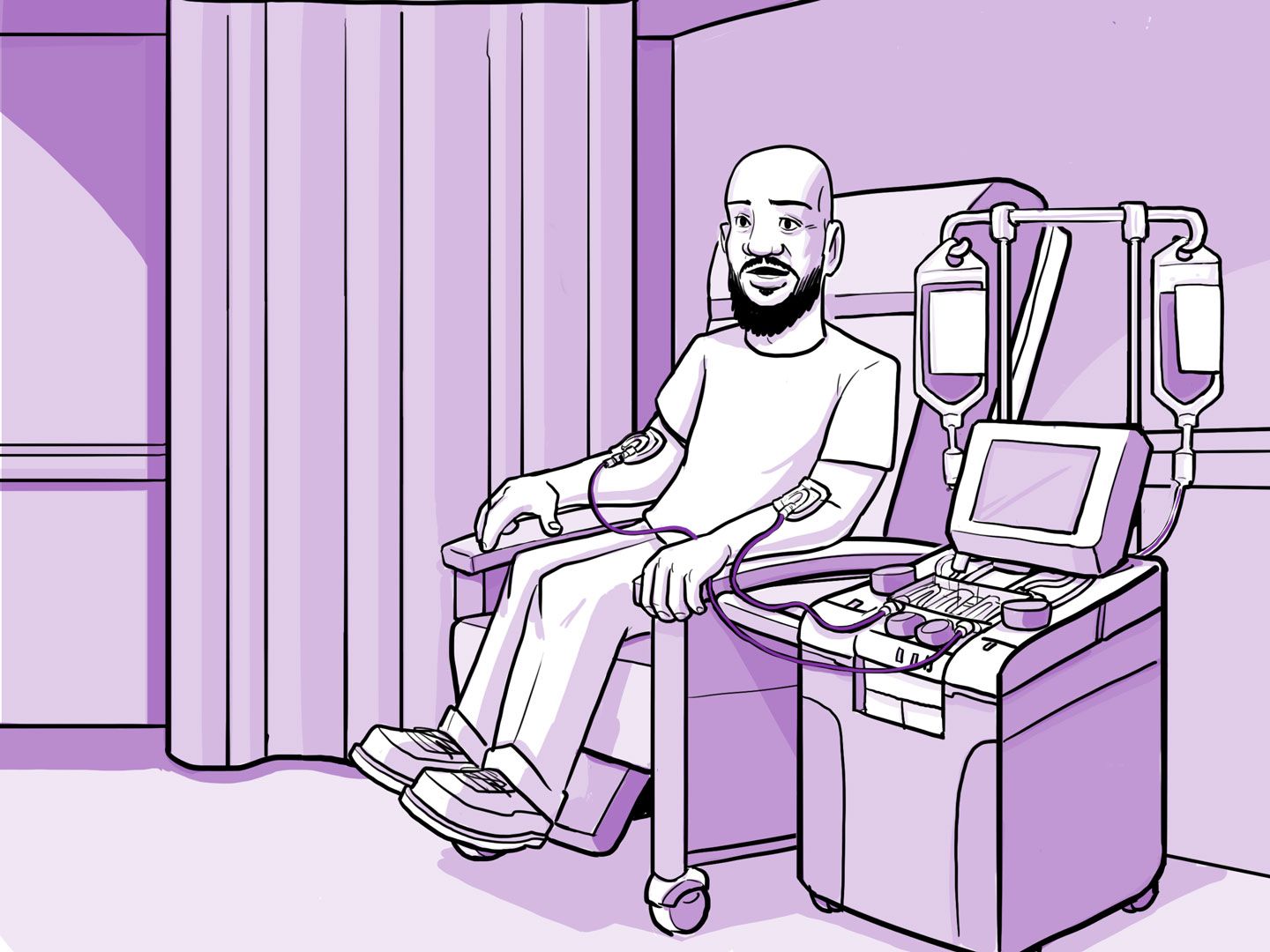After 2 weeks
After 2 weeks
Doctors usually collect blood-making stem cells from the donor just before they give them to you.
There are 2 options for collecting stem cells. It is not common for the donor to have any problems, but there are small risks with both options.
Option 1: Apheresis
Apheresis is when doctors collect the stem cells from the blood.
For 5 or 6 days before apheresis, the donor gets a G-CSF injection.
- This is medicine that causes the blood-making stem cells to expand and come out of the bones into the blood.
- It is common for this medicine to cause side effects, but these are not severe: bone and muscle aches, vomit (throwing up), nausea (feeling sick in your stomach), and trouble sleeping.
During apheresis, doctors connect the donor to a machine that collects stem cells from their blood.
- It takes 5 to 8 hours to collect the cells. Sometimes it can take more than one day.
- It can make the donor feel lightheaded, chills, numbness around the lips, and cramps in the hands.
- The donor is awake. It is not surgery.
- The donor will be in the hospital for a half day. They do not need to stay overnight.
Option 2: Bone Marrow Harvest
This is when doctors take blood-making stem cells from inside the donor’s hip bone.
- The donor is asleep during this surgery.
- Doctors put a needle in the hip bone and pull out blood-making stem cells.
- The surgery takes 1 to 2 hours.
- The donor will be in the hospital for a half day. They do not need to stay overnight.
- The donor will get anesthesia (medicine to put them to sleep). A specialist doctor will talk to the donor about anesthesia risks.
- After the bone marrow harvest, the donor can feel stiff or have a sore hip. They should be back to normal in a few days, but sometimes it can take a few weeks.
Umbilical cord blood is a good source of blood-making stem cells and can be used to do a transplant.
Umbilical cord blood is donated by parents when their children are born. There are cord blood banks which store donated cord blood. Your doctor can check if a cord blood bank has blood-making stem cells that are a good match to you. If a match is available, your doctor can request it for you.
Apheresis is how blood-making stem cells are collected without surgery.
- The donor is connected to a machine by a central line. This is a thin flexible tube that is placed in a large vein in the neck, chest, or groin area. It is also called a central venous access catheter.
- The donor’s blood runs from the central line into the machine.
- The machine filters out their blood-making stem cells.
- It keeps their blood-making stem cells in the machine.
- The machine returns the rest of their blood to their body.
Granulocyte colony stimulating factor (G-CSF) is medicine that moves blood-making stem cells into the blood.
- Blood-making stem cells are normally in your bone marrow.
- After they move into the blood, these cells can be collected using the apheresis machine.
